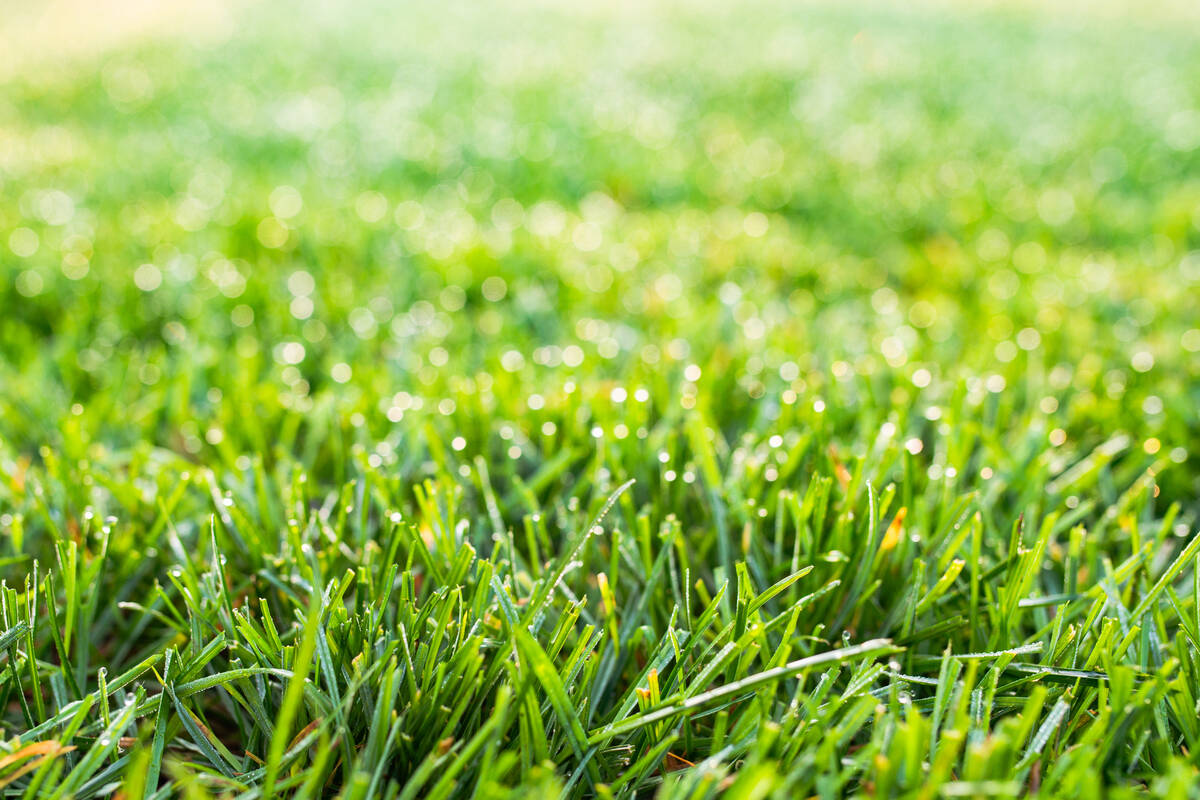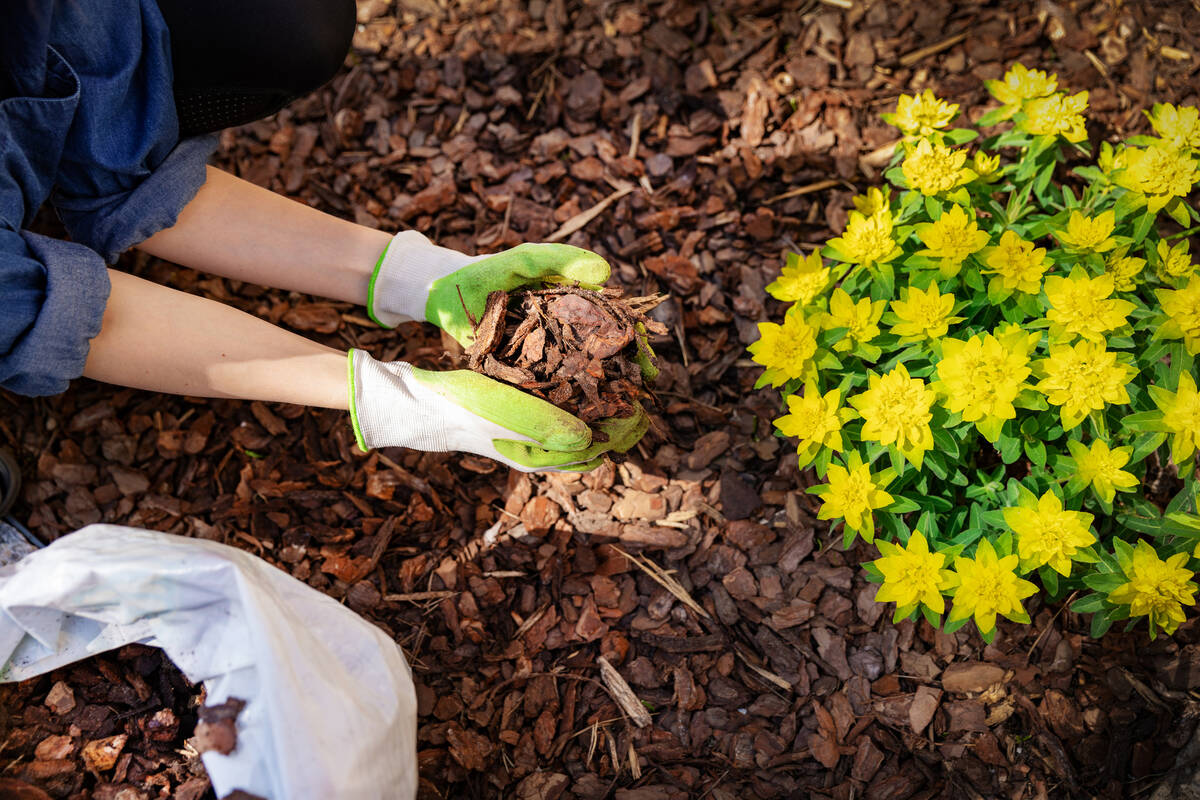How do you figure out adequate watering times?
Q: Do you have any thoughts on watering times and durations for lawns, fig trees and palms? What time of day should I set my sprinklers? On the fig and palm trees, I have it set to once a week for four minutes total. Do you think this is acceptable?
A: Watering an established tall fescue lawn with stationary pop-ups usually lasts 12 to 15 minutes, total time, for one irrigation. This 12- to 15-minute cycle can be split into three shorter cycles (four to five minutes each) about an hour apart if needed.
This application of water varies from the heat of summer (once a day) to winter (once every week to 10 days depending on the soil). Finish watering just before sunrise, as after that it tends to get windy. Watering at night promotes diseases.
Core aerate the lawn any month, once or twice a year. Do this when the lawn needs it. Fertilize lawns four to five times a year (about eight weeks apart). Avoid fertilizing during the heat of the summer. Don’t forget to fertilize tall fescue around Halloween to keep it thick and green during the coldest months.
Mow the lawn no shorter than 2 inches. Put your mower on the highest setting.
You must be using adjustable drip emitters on your trees. But to answer your question, I’d need to know how much water (in gallons) is applied to these trees and where.
In springtime, I suggest watering twice a week for landscape plants. The same goes for lawns.
Look at your fig tree. Water should be applied so that at least half of the area under the tree canopy gets wet. If the tree is kept 10 feet tall, turn on the water long enough to wet the soil 18 inches deep. If the tree gets 30 feet tall, water 24 inches deep. The taller the tree, the deeper it is watered. The wider the tree, the wider area over which water is applied.
Judge how deep a tree is irrigated with a 4-foot-long piece of thin rebar. The day of irrigation find three places with wet soil 12 to 18 inches from the trunk. Push the rebar into this soil shortly after irrigation. It gets harder to push into the soil where the water stops.
You should be watering 18 to 24 inches deep. Use the average of these three locations, and adjust the watering depth with drip emitters. Make sure you don’t put annual flowers at the base of trees or they will require frequent watering and may cause root rot disease.
Palms are more difficult because they don’t get much wider with time, just taller. Once you have the watering dialed in, they don’t require much of an increase. The right amount is usually 18 to 24 inches deep with four drip emitters.
Q: Many of your articles talk about the depth of the water when irrigating. Having the drips on top of the ground can make it hard to get the water to the desired depth. If you want watering at 12 inches, what is your opinion of putting a piece of plastic pipe to that depth, then just put the drip line down the pipe so it drips at 12 inches? If you are worried about spreading the water out, you could always put a larger pipe or plastic junction box at the bottom.
A: It does not change how much water is needed. A surface mulch of 3 to 4 inches nearly eliminates evaporation from the soil. I would not use any devices that divert water deeper — it just costs money and adds to the watering confusion.
Most plants rely on water that fills the soil from top to bottom. The depth of applied water depends on the height of the tree. Generally, small trees (less than 20 feet tall) require less water than large trees.
Did you ever hear of the 40-30-20-10 rule in landscaping? Plant roots range from about 12 inches to 3 feet deep. The taller the plant, the deeper its roots. Divide landscape plant roots into four equal parts (quartiles). The quartile closest to the soil surface uses about 40 percent of the applied water, the next quartile uses about 30 percent, the next uses about 20 percent and the last quartile uses about 10 percent.
Quartiles are human inventions. As water in this 40 percent quartile becomes more difficult to extract, the plant uses the next quartile, and the next, and finally the last. Plants don’t expend any more effort than they need to. For nondesert plants we schedule a new irrigation when this water is about 50 to 60 percent gone.
Q: After seeing the beautiful flower color of Red Baron peach on your YouTube channel, I want one. Where can I get it? I tried to find it locally but couldn’t.
A: I found it at GrowOrganic.com. It is a yellow-fleshed variety that flowers in early to mid-March and produces fruit somewhere around mid-July to August. They will ship the tree to Las Vegas without soil in late January or early February but is very difficult to find locally. Plant it (wet) as soon as you get it. Planting it wet should give you about one week of its water needs.
I would give the fruit from that tree a high three or four out of five stars. It is a good reliable peach tree for our area.
Q: I have been hearing about the benefits of wood mulch for my garden. What type of wood should I look for and where would I find it? Do I work it into the soil like my lawn cuttings or just spread it on the surface?
A: Three things are important: soil temperature, watering so the soil stays moist and the size of the wood chips. The smaller the wood chips, the faster they rot or decompose. Temperatures warmer than 55 degrees speed up the decomposition process; dryness slows it down.
About a quarter-inch to half-inch is the ideal size for wood chips.
The source of the wood chips is also important. Never use bark unless you want it to look pretty and float or blow away. A mixture of wood and bark is OK, but not straight bark.
Grass clippings rot quickly compared with wood chips. Wood chips have a carbon-to-nitrogen ratio of around 300- or 400-to-1. So to get wood chips to release their nutrients, you must add nitrogen fertilizer.
Lawn clippings have a carbon-to-nitrogen ratio of about 40- or 60-to-1. Because of this, they act like a complete fertilizer (no need to add nitrogen).
Just remember with wood mulch, use finely ground chips when mixed in the soil and add nitrogen fertilizer with it.
Bob Morris is a horticulture expert and professor emeritus of UNLV. Visit his blog at xtremehorticulture.blogspot.com. Send questions to Extremehort@aol.com.
























